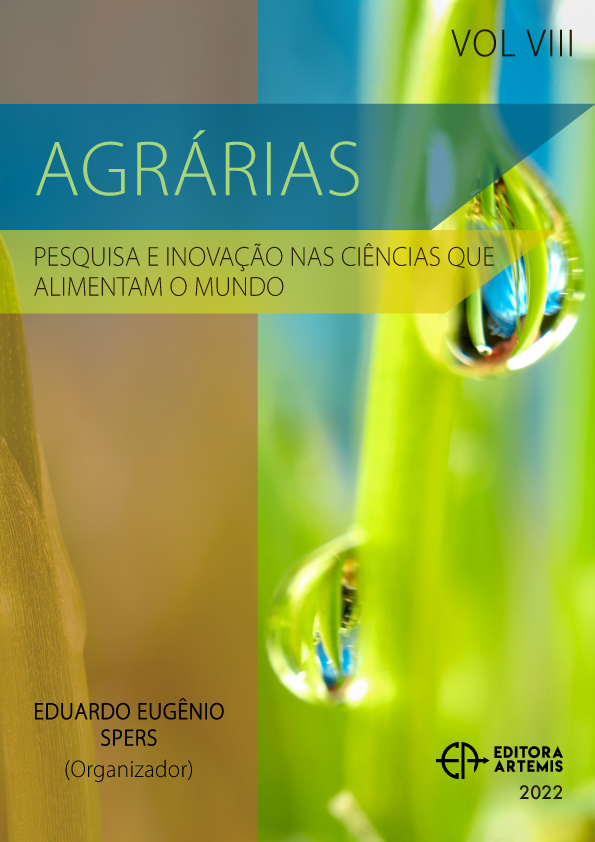
THE EFFECT OF VEGETATIVE TREATMENT OF GRAPES WITH A PREPARATION BASED ON AMINO ACIDS ON THE PHENOLIC COMPLEX OF BERRIES
Um dos problemas modernos da vinificação é o atraso na formação do complexo fenólico das bagas em relação ao acúmulo de açúcares durante o amadurecimento das uvas. Isto leva a uma distorção dos estilos organolépticos estabelecidos de vinhos tintos. Parece promissor influenciar o metabolismo das uvas no sentido de aumentar a síntese de metabólitos secundários através do uso de coberturas foliares. Os precursores da formação de compostos fenólicos nos aminoácidos das células vegetais. Estudamos o efeito de fertilizantes foliares à base de um complexo de aminoácidos ("Siamino Pro 500), introduzido no início do amadurecimento da uva, sobre os compostos fenólicos em bagas de uva de 4 cultivares da zona da costa sul da Crimeia. Usando HPLC , foi revelado que em um nível semelhante de acúmulo de açúcar (na faixa de 183-218 g L-1), o teor de complexo antocianinas nas cascas das uvas experimentais 'Merlot' e 'Shiraz' foi de 71% e 12 % maior que no controle (α ˂ 0,05), em 'Cabernet Sauvignon' e 'Sangiovese' foi 17% e 45% menor O processamento experimental das uvas 'Merlot' e 'Shiraz' levou a um aumento no teor de monoglicosídeos de delfinidina, cianidina, formada a partir de antecessores, em média 1.7 vezes Em 'Cabernet Sauvignon' e 'Sangiovese', o tratamento estimulou a conversão de antocianinas, aumentando a proporção de monoglicosídeos de malvidina em 1.2 e 1.4 vezes.
THE EFFECT OF VEGETATIVE TREATMENT OF GRAPES WITH A PREPARATION BASED ON AMINO ACIDS ON THE PHENOLIC COMPLEX OF BERRIES
-
DOI: 10.37572/EdArt_26082268212
-
Palavras-chave: compostos fenólicos, maturidade fenólica, complexo de aminoácidos, casca de baga, sementes
-
Keywords: phenolic compounds, phenolic maturity, complex of amino acids, berry skin, seeds
-
Abstract:
One of the modern problems of winemaking is the lag in the formation of the phenolic complex of berries in relation to the accumulation of sugars during the ripening of grapes. This leads to a distortion of the established organoleptic styles of red wines. It seems promising to influence the metabolism of grapes in the direction of increasing the synthesis of secondary metabolites through the use of foliar dressings. The precursors of the formation of phenolic compounds in the plant cell amino acids. We studied the effect of foliar fertilizers based on a complex of amino acids ("Siamino Pro 500), introduced at the beginning of grape ripening, on the phenolic compounds in grape berries of 4 cultivars from the South Coast zone of the Crimea. Using HPLC, it was revealed that at a similar level of sugar accumulation (in the range 183-218 g L-1), the content of anthocyanins complex in the skins of the experimental grapes of 'Merlot' and 'Shiraz' was 71% and 12% higher than in the control (α ˂ 0.05); in ‘Cabernet Sauvignon’ and ‘Sangiovese’ it was 17% and 45% less. Experimental processing of ‘Merlot’ and ‘Shiraz’ grapes led to an increase in the content of monoglucosides of delphinidin, cyanidin, formed from predecessors, by an average of 1.7 times. In ‘Cabernet Sauvignon’ and ’Sangiovese’, the treatment stimulated the conversion of anthocyanins, increasing the proportion of monoglucosides of malvidin by 1.2 and 1.4 times.
-
Número de páginas: 13
- Svetlana Levchenko
- Elena Ostroukhova
- Sofia Cherviak
- Vladimir Boyko
- Dmitriy Belash
- Irina Peskova
- Nataliya Lutkova
- Mariya Viugina
- Olga Zaitseva
- Aleksandr Romanov

